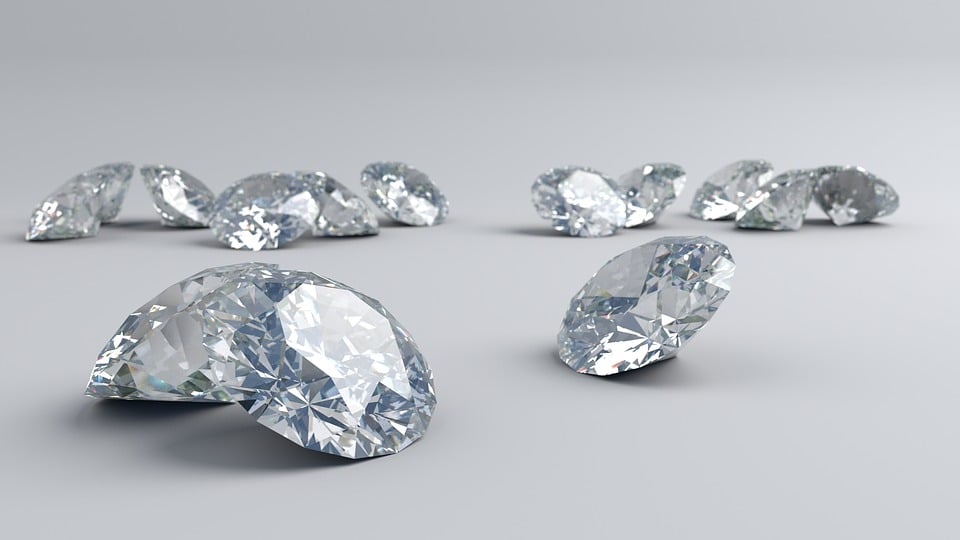
In recent years, lab grown engagement rings have become a significant trend in the world of fine jewelry. As more people become aware of their benefits, the demand for these stunning alternatives to traditional mined diamonds continues to rise. In this article, we’ll delve into the charm and appeal of lab-grown engagement rings, exploring the advantages of man-made diamonds and what sets them apart from their natural counterparts.
Understanding Lab-Grown Diamonds
What Are Lab-Grown Diamonds?
Lab-grown diamonds, also known as synthetic or cultured diamonds, are real diamonds created in a laboratory setting. These diamonds possess the same physical and chemical properties as natural diamonds but are produced through advanced technological processes. The two primary methods for creating lab-grown diamonds are High Pressure High Temperature (HPHT) and Chemical Vapor Deposition (CVD).
The HPHT Method
The HPHT method replicates the high-pressure, high-temperature conditions found in the Earth’s mantle. This process involves placing a small diamond seed in a chamber with carbon and subjecting it to extreme heat and pressure. Over time, the carbon atoms crystallize around the seed, forming a diamond.
The CVD Method
The CVD method, on the other hand, uses a carbon-rich gas to create a diamond. In a vacuum chamber, the gas is ionized, and the carbon atoms deposit onto a diamond seed, growing layer by layer. This method allows for more precise control over the diamond’s growth and quality.
Why Choose Lab-Grown Engagement Rings?
Ethical and Environmental Considerations
One of the most compelling reasons to choose a lab-grown engagement ring is the ethical and environmental benefits. Traditional diamond mining can have significant negative impacts on the environment and often involves complex ethical issues related to labor practices. Lab-grown diamonds, being created in controlled environments, eliminate these concerns. They offer a more sustainable option without compromising on beauty or quality.
Cost-Effectiveness
Lab-grown diamonds are typically more affordable than their mined counterparts. This is due to the lower production costs and the absence of mining expenses. For couples looking to maximize their budget, lab-grown diamonds provide an excellent opportunity to acquire a larger or higher-quality stone for a fraction of the price of a mined diamond.
Quality and Aesthetics
In terms of appearance, lab-grown diamonds are virtually indistinguishable from natural diamonds. They exhibit the same brilliance, fire, and scintillation, thanks to their identical chemical and physical properties. Whether you’re interested in a classic round brilliant cut or a more unique fancy shape, lab-grown diamonds can be customized to meet your exact specifications.
Popular Styles of Lab-Grown Engagement Rings
Classic Solitaires
The classic solitaire engagement ring is a timeless choice that showcases a single diamond. Lab-grown solitaires offer all the elegance and simplicity of natural diamond solitaires, with the added benefit of ethical sourcing and affordability.
Halo Settings
Halo settings feature a central diamond surrounded by a circle of smaller stones, enhancing the overall sparkle and size of the ring. Lab-grown diamonds work beautifully in halo settings, providing a dazzling effect that captures attention.
Three-Stone Rings
Three-stone engagement rings symbolize the past, present, and future of a relationship. With lab-grown diamonds, you can choose three matching stones or mix and match shapes and sizes to create a personalized design.
Vintage-Inspired Designs
For those who appreciate antique charm, vintage-inspired engagement rings with lab-grown diamonds offer a perfect blend of classic aesthetics and modern ethics. These designs often feature intricate details, milgrain edges, and unique settings that evoke a sense of history and romance.
How to Choose the Perfect Lab-Grown Engagement Ring
Determine Your Budget
Setting a budget is crucial when choosing an engagement ring. With lab-grown diamonds, you can often get more value for your money, allowing you to choose a larger or higher-quality stone within your budget.
Consider the 4 Cs
Just like natural diamonds, lab-grown diamonds are graded based on the 4 Cs: Carat weight, Cut, Color, and Clarity. Understanding these factors will help you select a diamond that meets your preferences and requirements.
Choose a Reputable Jeweler
When purchasing a lab-grown engagement ring, it’s important to choose a reputable jeweler who specializes in these stones. Look for certifications and transparency regarding the diamond’s origin and quality to ensure you’re getting a genuine product.
Personalize Your Ring
Lab-grown diamonds offer the opportunity to create a truly unique engagement ring. Consider custom designs, personalized engravings, or incorporating meaningful elements to make the ring special and one-of-a-kind.
The Future of Lab-Grown Engagement Rings
As technology continues to advance, lab-grown diamonds are expected to become even more popular. Their ethical, environmental, and economic advantages make them an appealing choice for modern couples. With ongoing innovations in diamond creation and design, the future of lab-grown engagement rings looks bright and promising.
Conclusion
Lab-grown engagement rings are redefining the jewelry industry, offering a blend of beauty, ethics, and affordability that resonates with today’s conscientious consumers. Whether you’re drawn to their ethical benefits, cost-effectiveness, or simply their stunning appearance, man made diamonds provide a compelling alternative to traditional mined stones. As you embark on the journey of finding the perfect engagement ring, consider the many advantages of lab-grown diamonds and discover the beauty and brilliance they can bring to your special moment.


![How To Teach [pii_email_00ba47ac8b2817e36aa3] Better Than Anyone Else How To Teach [pii_email_00ba47ac8b2817e36aa3] Better Than Anyone Else](https://i.ibb.co/6wbxkhM/pii-email-be5f33dbc1906d2b5336.png)
